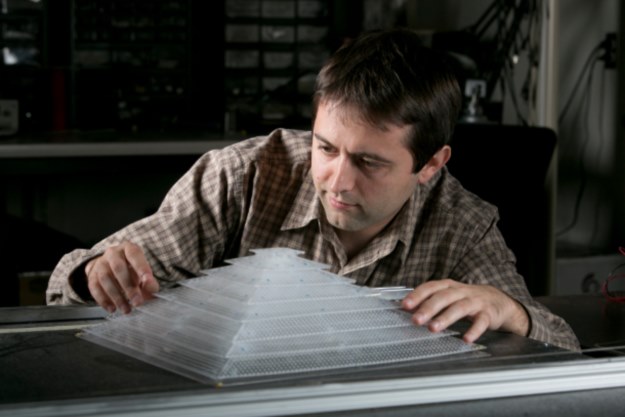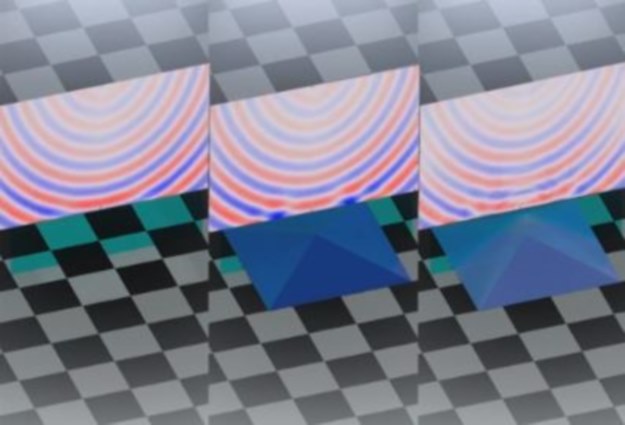Although there’s been progress in the field of a real invisibility cloak that could completely shield you from another’s view, that’s not exactly the kind of cloak Duke University engineers have been working on.
The engineers have fashioned a three-dimensional acoustic cloaking device made of plastic that can reroute sound waves and hide an object from sonar. Since sonar works by emitting a pulse of sound into he water and waiting for the waves to bounce off of an object, making the object appear as if it were not there would make it invisible to sonar detection systems.

Bogdan Popa, a graduate student in electrical and computer engineering, shows off the 3D acoustic cloak he helped design and build.
The cloaking device works in all three dimensions regardless of where the sound is coming from or where an observer is located.
“The particular trick we’re performing is hiding an object from sound waves. By placing this cloak around an object, the sound waves behave like there is nothing more than a flat surface in their path,” said Steven Cummer, professor of electrical and computer engineering at Duke University.
How they did it
In order to manipulate the sound waves, the team used only plastic and air. The constructed device consists of plastic plates with repeating pattern of holes poked through them and stacked one on top of the other to create a pyramid-looking device.
The purpose of the cloak is to alter the wave’s trajectory to make it look like the normal pattern waves that would occur if there was no object in the path.
Testing
To test the cloaking device, Duke engineers covered a small sphere with the cloak and sent out short bursts of sound from a variety of angles. They used a microphone to map the waves’ responses and produced videos of them travelling through the air.
They performed the same actions on a sphere that was not covered and then compared the recordings. The results shows that the cloaking device makes it appear as though the sound waves were reflected off of an empty surface.

In the test, the waves are identical with the cloaking device an without.
Cummer believes that the device has potential commercial applications in sonar avoidance and architectural acoustics.
“But there’s also the design of auditoriums or concert halls—any space where you need to control the acoustics. If you had to put a beam somewhere for structural reasons that was going to mess up the sound, perhaps you could fix the acoustics by cloaking it,” said Cummer.
Learn more about the acoustic cloaking device by visiting Duke University’s website.
Advertisement
Learn more about Electronic Products Magazine






